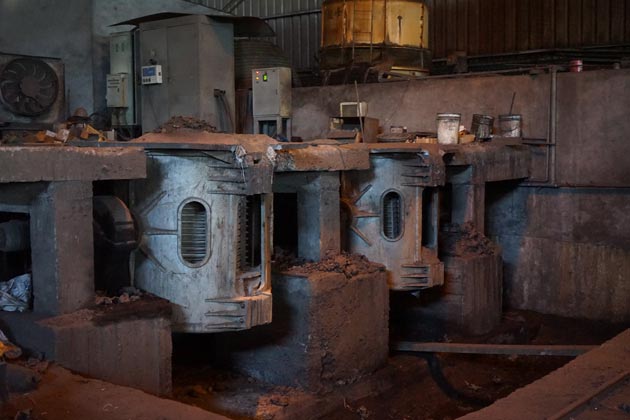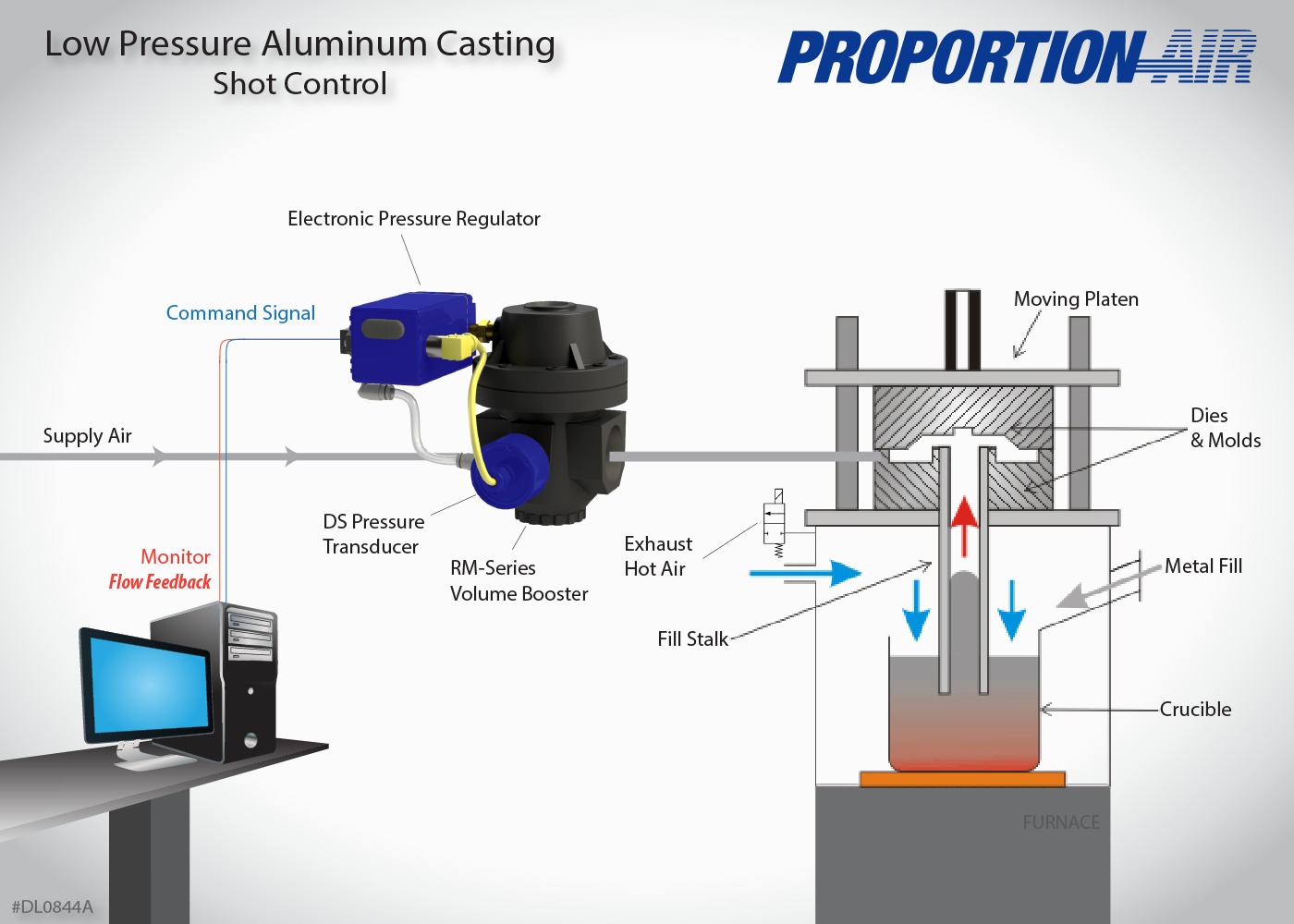Exactly How Aluminum Foundry Adds To Improvements in Aerospace Design
Aluminum foundries are indispensable to advancements in aerospace design. They generate lightweight, high-strength parts that are vital for modern aircraft. Via sophisticated spreading techniques, these factories create complicated geometries that boost architectural integrity. Furthermore, the advancement of premium Aluminum alloys supports the industry's emphasis on gas effectiveness and sustainability. Nevertheless, difficulties remain in the manufacturing process. Comprehending these variables reveals the extensive impact of Aluminum on air travel's future.
The Relevance of Lightweight Materials in Aerospace Style
As the aerospace industry remains to develop, the value of light-weight materials becomes progressively noticeable. The need for efficiency and sustainability drives engineers to prioritize the use of materials that minimize total weight without endangering structural integrity. Lightweight materials, specifically Aluminum, play a crucial role in improving fuel effectiveness, enhancing payload capability, and boosting the total efficiency of airplane.
The combination of these materials allows for innovative designs, allowing makers to produce more wind resistant shapes that can endure extreme problems. The decrease in weight not just decreases functional expenses however also contributes to a decreased ecological impact, lining up with global efforts towards sustainability in air travel.
Advanced Casting Techniques in Aluminum Foundries
Advanced spreading methods in Aluminum foundries play a vital role in aerospace design by allowing the production of light-weight and specific parts. Technologies in mold style and accuracy casting processes are important in achieving perfect performance and architectural honesty. In addition, the advancement of light-weight alloys enhances the total effectiveness and effectiveness of aerospace applications.
Ingenious Mold And Mildew Design
Ingenious mold layout plays a necessary duty in the effectiveness and performance of Aluminum factories, specifically within the aerospace industry. By leveraging innovative products and techniques, modern molds can be crafted to endure heats and pressures, ensuring peak performance during the spreading process. These styles usually incorporate complicated geometries that allow for the production of light-weight yet structurally audio elements, necessary for aerospace applications. Additionally, using computer-aided layout (CAD) software facilitates exact modeling, making it possible for factories to fine-tune and imitate mold designs before physical production begins. This not just enhances the top quality of actors parts yet also minimizes waste and preparation, leading to significant expense financial savings. Overall, innovative mold style is a keystone of progress in Aluminum Foundry innovation for aerospace design.
Accuracy Casting Procedures
The performance of ingenious mold and mildew designs perfectly incorporates with accuracy spreading processes, which are important for producing high-grade Aluminum elements in aerospace design. These processes, including sand spreading, pass away spreading, and financial investment spreading, assure the creation of intricate geometries with limited tolerances. Advanced techniques like vacuum cleaner casting and stress pass away casting improve the integrity and surface area coating of the last items. Precision casting minimizes product waste while taking full advantage of the mechanical residential or commercial properties of Aluminum, critical for aerospace applications. Additionally, using real-time monitoring and progressed simulation devices during the spreading process enables prompt adjustments, causing enhanced quality assurance. Jointly, these accuracy spreading processes placement Aluminum foundries at the center of aerospace advancement, supporting the industry's demand for dependability and efficiency.
Lightweight Alloy Advancement
As aerospace engineers seek to boost fuel efficiency and efficiency, light-weight alloy development ends up being a crucial emphasis in Aluminum shops. These factories use innovative casting methods to create alloys that offer superior strength-to-weight proportions. Innovations in alloy structure, including the incorporation of elements like lithium and magnesium, allow the production of products that endure severe conditions while minimizing total aircraft weight. Techniques such as die spreading and financial investment spreading promote the accuracy production of intricate forms, which are critical for aerospace applications. Furthermore, continuous research aims to maximize these alloys for boosted mechanical residential or commercial properties and raised longevity. By focusing on light-weight alloy advancement, Aluminum foundries greatly add to the development of aerospace engineering, leading the means for more efficient and lasting aircraft styles.

Enhancing Structural Stability Through Aluminum Elements
Aluminum components use considerable benefits in improving structural honesty within aerospace engineering. Their lightweight nature adds to total effectiveness while maintaining toughness, which is necessary for aircraft efficiency. Furthermore, the anxiety resistance buildings of Aluminum aid ensure the toughness and dependability of aerospace structures under various operational problems.
Light-weight Product Benefits
While typical materials frequently jeopardize weight for strength, utilizing Aluminum components in aerospace design uses substantial benefits in structural stability. Aluminum's lightweight nature contributes to total design performance, enabling more streamlined aircraft that consume much less fuel, thus enhancing sustainability. The product's outstanding strength-to-weight proportion assurances that components preserve resilience without adding unneeded mass. This quality cultivates boosted efficiency and dexterity in flight, as well as enhanced haul capabilities. Additionally, Aluminum's resistance to corrosion extends the life expectancy of aerospace structures, minimizing maintenance expenses and improving security. As producers increasingly adopt Aluminum alloys, the aerospace sector this link experiences a transformative shift in the direction of extra efficient and efficient engineering options that focus on both efficiency and ecological responsibility.
Stress Resistance Characteristics
Different products possess distinct buildings, Aluminum's remarkable tension resistance stands out as an important element in boosting the architectural integrity of aerospace elements. This resistance plays an essential duty in making certain that aircraft can stand up to various functional stresses, consisting of exhaustion, effect, and ecological problems. Aluminum alloys, particularly engineered for aerospace applications, exhibit high tensile stamina while maintaining lightweight characteristics, enabling designers to make extra effective structures - Aluminum Foundry. In addition, the capacity of Aluminum to withstand cyclic loading without considerable deformation adds to the durability and integrity of aerospace elements. As innovations proceed in Aluminum Foundry techniques, the growth of stress-resistant Aluminum elements assures additional enhancements in efficiency, safety, and performance throughout the aerospace market, solidifying Aluminum's role as a recommended product in contemporary design
Fuel Effectiveness Improvements Driven by Aluminum Innovations
As the aerospace market looks for to boost gas effectiveness, innovative usages of Aluminum have become an essential remedy. Aluminum's light-weight nature especially lowers airplane weight, permitting reduced fuel usage throughout trip. This decrease in weight is crucial, as also little reductions can bring about substantial enhancements in general gas economy.
Advanced Aluminum alloys, created for boosted strength and durability, make it possible for manufacturers to produce elements that preserve architectural stability while minimizing mass - Aluminum Foundry. Furthermore, the integration of Aluminum in airframes and engine elements helps with boosted aerodynamics, adding to reduced drag and boosted effectiveness
The fostering of Aluminum in aerospace not just meets the demand for fuel-efficient design yet additionally straightens with governing stress for reduced emissions. As these developments proceed to develop, they play a considerable role in setting new criteria for gas performance, making sure that the aerospace industry can meet growing environmental and economic obstacles.

The Function of Aluminum in Sustainable Air Travel Practices
The boosting emphasis on sustainable aeronautics methods has placed Aluminum as a necessary product in the mission for greener aircraft layout. Recognized for its lightweight homes, Aluminum considerably decreases aircraft weight, bring about reduced fuel usage and discharges. Its recyclability even more improves its sustainability account, as Aluminum can be reused forever without loss of quality. This characteristic supports a circular economy within the aviation market, decreasing waste and resource deficiency.
Developments in Aluminum alloys have actually boosted their strength and corrosion resistance, allowing for longer solution life and reduced maintenance needs. These advancements assist in the advancement of extra effective airplane structures, contributing to general sustainability initiatives. In addition, Aluminum's thermal conductivity plays an essential duty in energy-efficient designs, improving systems such as warm exchangers. Collectively, these attributes emphasize Aluminum's critical function beforehand sustainable aeronautics, lining up with global efforts focused on lowering the environmental effect of flight.
Challenges Faced by Aluminum Foundries in Aerospace Production
While Aluminum foundries play a vital role in aerospace production, they face substantial obstacles that can influence manufacturing efficiency and quality. One significant challenge is the stringent quality control standards needed in the aerospace industry. Any defect can jeopardize security and efficiency, necessitating strenuous evaluation processes that extend production timelines. Furthermore, shops frequently emulate varying basic material prices, which can influence rates and profitability. The complexity of Aluminum alloys used in aerospace applications further complicates the manufacturing procedure, as precise solutions are essential for accomplishing wanted mechanical buildings. In addition, skilled labor shortages prevent the official statement capacity to preserve premium production levels. Environmental regulations enforce restrictions on exhausts and waste management, calling for foundries to invest in sustainable methods, which can be cost-prohibitive. These variables collectively develop a landscape where Aluminum foundries must continually adapt to fulfill the advancing needs of aerospace manufacturing while making certain safety and security and compliance.
Future Fads in Aluminum Applications for Aerospace Engineering
With developments in modern technology try this site and enhancing needs for effectiveness, the future of Aluminum applications in aerospace design is poised for substantial improvement. The integration of cutting-edge Aluminum alloys and compounds is expected to improve strength-to-weight ratios, bring about more fuel-efficient airplane designs. Furthermore, advancements in additive production techniques will certainly enable for the manufacturing of complicated Aluminum frameworks that were previously impossible, maximizing performance and minimizing waste.

Lasting practices will play an important function, with an expanding focus on reusing Aluminum to reduce ecological impact. The aerospace market is likely to accept smarter making procedures, such as automation and expert system, making certain greater top quality and accuracy in Aluminum parts. Furthermore, partnerships between Aluminum shops and aerospace firms will certainly cultivate research and advancement, leading the means for brand-new applications that satisfy the stringent requirements of modern aerospace design - Aluminum Foundry. Overall, the future looks guaranteeing for Aluminum's role fit the skies
Regularly Asked Concerns
What Are the Environmental Effects of Aluminum Manufacturing in Aerospace?
The ecological influences of Aluminum manufacturing in aerospace consist of considerable power intake, greenhouse gas discharges, and habitat disruption. In addition, mining processes can result in dirt degradation and water contamination, raising concerns concerning sustainability and environmental equilibrium.
Just How Does Aluminum Contrast to Various Other Products in Aerospace Applications?
Aluminum supplies a distinct combination of light-weight residential or commercial properties, rust resistance, and cost-effectiveness contrasted to other products. Its high strength-to-weight ratio makes it especially beneficial for aerospace applications, improving fuel performance and general efficiency in aircraft design.
What Qualifications Do Aluminum Foundry Workers Need for Aerospace Projects?
Aluminum Foundry workers call for customized training in metallurgy and spreading strategies, along with knowledge of aerospace industry requirements. Certifications in top quality control and safety procedures are also important to assure conformity with rigid aerospace project demands.
Are There Any Kind Of Safety And Security Concerns With Using Aluminum in Aerospace Design?
Security problems regarding Aluminum in aerospace engineering consist of vulnerability to corrosion, stress and anxiety, and fatigue fractures. Proper treatment and alloy choice are important to alleviate these threats, ensuring structural stability and overall safety in aerospace applications.
Just How Does Aluminum Recycling Advantage the Aerospace Sector?
Aluminum recycling significantly profits the aerospace industry by decreasing product prices, lessening ecological influence, and preserving power. This sustainable method enhances the industry's performance while advertising the use of light-weight, high-performance parts in airplane manufacturing.
Advanced spreading strategies in Aluminum foundries play a crucial duty in aerospace engineering by allowing the production of light-weight and accurate elements. Ingenious mold layout plays a crucial role in the efficiency and effectiveness of Aluminum factories, specifically within the aerospace field. As aerospace designers seek to improve gas efficiency and performance, light-weight alloy advancement becomes an important focus in Aluminum factories. Aluminum alloys, especially engineered for aerospace applications, show high tensile stamina while maintaining lightweight qualities, enabling designers to design more effective frameworks. Partnerships in between Aluminum shops and aerospace firms will certainly foster study and advancement, leading the method for new applications that meet the stringent requirements of contemporary aerospace design.